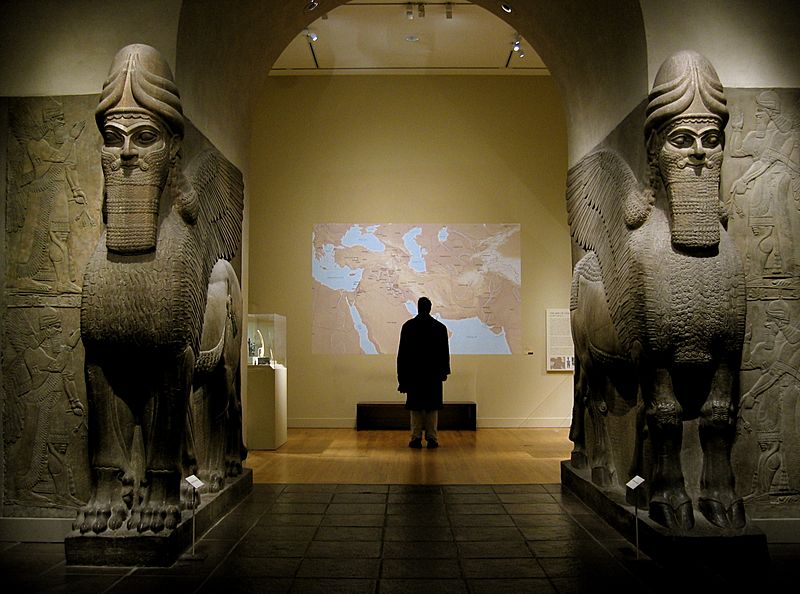Image: The Gate of Nimrud (Metropolitan Museum)

Description: From the gate of Nimrud. A human-headed winged bull and winged lion (lamassu), Neo-Assyrian from the reign of Ashurnasirpal II; 883–859 B.C. Mesopotamia, Nimrud (ancient Kalhu) Alabaster (gypsum); H. 10 ft. 3 1/2 in. (313.7 cm) Gift of John D. Rockefeller Jr., 1932 (32.143.1–.2) Location: Metropolitan Museum of Art, New York. From the 9th to the 7th century B.C., the kings of Assyria ruled over a vast empire centered in northern Iraq. The great Assyrian king Ashurnasirpal II (r. 883–859 B.C.) undertook a vast building program at Nimrud, ancient Kalhu. Until it became the capital city under Ashurnasirpal, Nimrud had been no more than a provincial town. The new capital occupied an area of about nine hundred acres, around which Ashurnasirpal constructed a mudbrick wall that was 120 feet thick, 42 feet high, and five miles long. In the southwest corner of this enclosure was the acropolis, where the temples, palaces, and administrative offices of the empire were located. In 879 B.C. Ashurnasirpal held a festival for 69,574 people to celebrate the construction of the new capital, and the event was documented by an inscription that read: "...the happy people of all the lands together with the people of Kalhu—for ten days I feasted, wined, bathed, and honored them and sent them back to their home in peace and joy."
Title: The Gate of Nimrud (Metropolitan Museum)
Credit: https://www.flickr.com/photos/rosemania/86746793/
Author: rosemanios
Usage Terms: Creative Commons Attribution 2.0
License: CC BY 2.0
License Link: https://creativecommons.org/licenses/by/2.0
Attribution Required?: Yes
Image usage
The following page links to this image:

